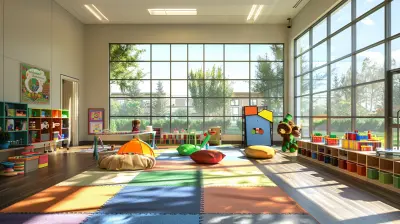4 May 2025
Teaching music to someone who has no prior experience with it can be both an exciting and daunting task. You’re not just introducing them to notes and rhythms—you’re helping them discover an entirely new way to express themselves. But how do you teach music to non-musicians without overwhelming them?
The key is patience, creativity, and most importantly, making the experience enjoyable. If you can make learning music feel natural and fun, even someone with zero background can begin to understand and appreciate it.
In this article, we’ll walk through some effective, compassionate strategies to teach music to absolute beginners. Let’s dive in! 
1. Start with the Basics (And Keep It Simple)
Let’s be honest—music theory can be intimidating. If you start by throwing technical jargon at a non-musician, you might lose them before the lesson even begins. Instead, keep it simple.- Introduce them to the basic elements of music: rhythm, melody, and harmony.
- Use everyday analogies—for example, compare rhythm to a heartbeat or walking pace.
- Focus on one concept at a time so they don’t feel overwhelmed.
Breaking Down the Basics
Try teaching them through simple activities. Clap out a rhythm together, hum familiar tunes, or have them tap their fingers along with music. When they start feeling the beat, they’re already engaging with music!
2. Use Songs They Already Know
Have you ever noticed how much easier it is to learn something when it's familiar? Instead of starting with dry exercises and scales, use songs they already love.- Ask them what their favorite songs are and break those down into simple melodies or rhythms.
- Show them how music is built using patterns—this makes it less intimidating.
- If they recognize a melody, they’ll be more motivated to play it themselves.
For example, if they love a pop song, start by having them tap out the beat or sing a simple part of the melody. This makes the learning process more fun and engaging. 
3. Make It Interactive and Hands-On
Learning music isn't just about theory—it’s about doing. The more hands-on the experience, the better.- Get them to play an instrument as soon as possible, even if it’s just tapping on a drum or plucking a guitar string.
- Use call-and-response exercises to develop their ear and rhythm.
- Encourage them to experiment—let them play around with sounds, even if it doesn’t seem "correct" right away.
By actively engaging with music, they’ll develop confidence and start feeling more connected to it. 
4. Use Visual Aids and Technology
Some people learn best with visual cues. If they struggle with reading standard notation, try incorporating:- Color-coded notes (e.g., using different-colored stickers on piano keys)
- Chord diagrams for guitar or ukulele
- Music apps that make learning interactive and fun
Apps like Yousician, Simply Piano, or Chrome Music Lab allow beginners to visualize how music works, making abstract concepts more digestible.
5. Focus on Rhythm First
Rhythm is the foundation of music. If a beginner can feel the beat, they’re halfway there.- Start with body percussion—clapping, stomping, or snapping along with a song.
- Play games that involve keeping a steady beat (like having them march to music).
- Introduce simple drumming patterns before moving on to melodies.
Rhythm is intuitive—it’s in our footsteps, speech, and heartbeat. Once they feel comfortable keeping a steady beat, moving on to melody and harmony becomes much easier.
6. Encourage Singing (Even If They Think They Can’t)
A lot of non-musicians get self-conscious about their voices. But guess what? Singing is one of the most natural ways to internalize music.- Start with simple humming.
- Sing together—this makes it feel less intimidating.
- Use call-and-response singing games to help them develop pitch recognition.
When they realize that singing isn’t about being "perfect" but about feeling the music, they’ll gain confidence in their musical journey.
7. Make Mistakes a Normal Part of Learning
A big barrier for non-musicians is fear of failure. They might worry that they’ll sound bad or that they just "aren't musical." Your job is to normalize mistakes and show them that errors are just part of the process.- Share stories of how even professional musicians mess up and learn from it.
- Laugh off mistakes when they happen, and encourage them to keep going.
- Focus on progress rather than perfection.
When they see that making mistakes is normal, they’ll be more willing to take risks and experiment with music.
8. Keep Lessons Short and Fun
Attention spans vary, especially for beginners. Lengthy lessons filled with too much information can be overwhelming.- Stick to short, focused lessons (15-30 minutes is great for beginners).
- Always end on a positive note—celebrate small successes!
- Mix in activities like rhythm games and listening exercises to keep things engaging.
Music should feel exciting, not like homework. Keeping lessons fun and approachable ensures that beginners stay motivated.
9. Connect Music to Emotions
Music isn’t just about technique—it’s about emotion. Help beginners see how music is a powerful way to express themselves.- Ask them how certain songs make them feel.
- Encourage them to play or sing with emotion, even if they’re not technically perfect.
- Relate music to their personal experiences.
When they connect emotionally with music, they’ll develop a deeper appreciation and motivation to learn.
10. Be Patient and Celebrate Progress
Music is a journey, and learning takes time. Some students might pick up concepts quickly, while others need more repetition. Patience is key.- Encourage them by celebrating even the smallest victories.
- Remind them that every musician starts somewhere.
- Keep a positive, supportive attitude to build their confidence.
When a beginner feels encouraged and supported, they’ll keep coming back for more—and isn’t that the ultimate goal?
Final Thoughts
Teaching music to non-musicians doesn’t have to be intimidating. By keeping things simple, engaging, and enjoyable, you can help anyone discover the joy of making music.Remember: It’s not about perfection. It’s about enjoying the process and fostering a lifelong love for music. Whether they end up mastering an instrument or just enjoying music on a deeper level, your guidance can make a lasting impact.
Now go out there and help someone make their first musical breakthrough!









Noah McAndrews
Empowering non-musicians fosters creativity and connection. Keep inspiring!
December 20, 2025 at 1:51 PM